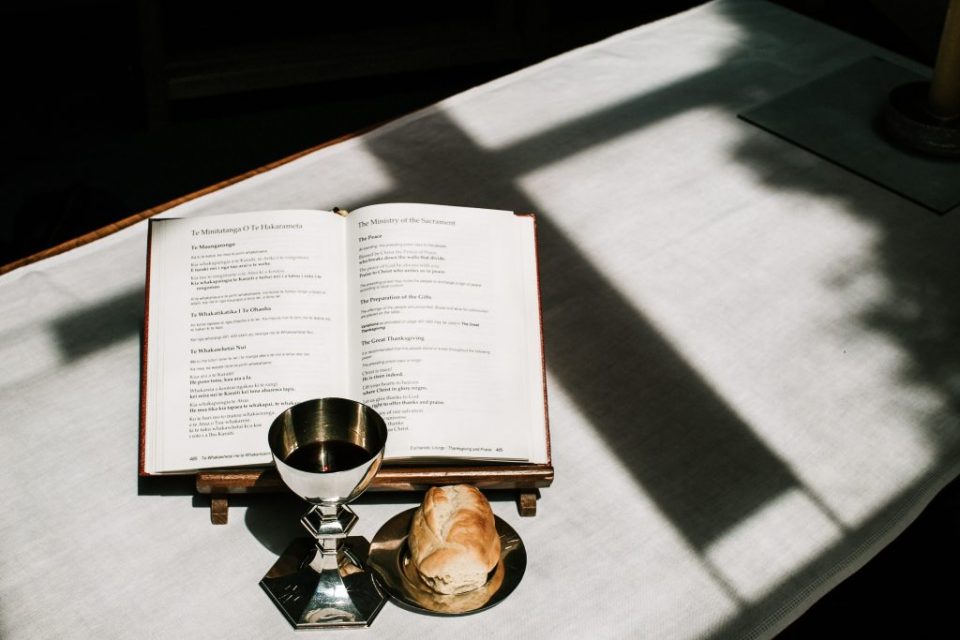What does the Bible say about Mass

For Catholics, Scripture is embodied not only in our lives but also in the liturgy. In fact, he is represented first in the liturgy, from Mass to private devotions, and this is where we find our formation.
Reading the scriptures, therefore, is not simply a matter of seeing how the New Testament satisfies the Old. For much of Protestantism, the New Testament satisfies the Old, and therefore, having determined the meaning of the Bible, the preacher delivers it as content. But for Catholicism, the New Testament satisfies the Old; therefore Jesus Christ, who is the fulfillment of the Ancient, surrenders himself in the Eucharist. Just as the Israelites and the Jews performed liturgies that Jesus himself performed, fulfilled and transformed, the Church, in imitation and obedience to Jesus, performs the liturgy of the Eucharist, the Mass.
A liturgical approach to the realization of Scripture is not a Catholic imposition that has remained since the Middle Ages but is in consonance with the canon itself. Because from Genesis to Revelation, the liturgy dominates Scripture. Consider the following:
The Garden of Eden is a temple - because the presence of a god or God makes a temple in the ancient world - with Adam as a priest; thus the subsequent Israelite temples were designed to reflect Eden, with the priesthood fulfilling the role of Adam (and of course Jesus Christ, the new Adam, is the great high priest). And as the evangelical scholar Gordon J. Wenham observes:
“Genesis is much more interested in worship than you normally think. It begins by describing the creation of the world in a way that prefigures the construction of the tabernacle. The Garden of Eden is portrayed as a sanctuary decorated with elements which subsequently adorned the tabernacle and the temple, gold, precious stones, cherubs and trees. Eden was where God walked. . . and Adam served as a priest.
Subsequently, Genesis presents other significant figures who offer sacrifices at significant moments, including Abel, Noah and Abraham. Moses commanded Pharaoh to let the Jews go so that they could worship: "Thus says the Lord, the God of Israel: 'Let my people go, so that they can organize a party for me in the desert'" (Exodus 5: 1b ). Much of the Pentateuch, the five books of Moses, concern liturgy and sacrifices, especially from the last third of the Exodus through Deuteronomy. History books are marked with sacrifices. The Psalms were sung in the sacrificial liturgy. And the prophets were not against the sacrificial liturgy as such, but they wanted people to live a fair life, lest their sacrifices be hypocritical (the idea that the prophets were resistant to the sacrificial priesthood comes from the Protestant scholars of the nineteenth century who read their opposition to the Catholic priesthood in the texts). Ezekiel himself was a priest and Isaiah foresaw the Gentiles by bringing their sacrifices to Zion at the end of time (Isa 56: 6–8).
In the New Testament, Jesus institutes the sacrificial ritual of the Eucharist. In Acts, early Christians attend temple services while also dedicating themselves "to the teaching and communion of the apostles, to breaking bread and praying" (Acts 2:42). In 1 Corinthians 11, St. Paul pours a good quantity of ink by taking care of the property in the Eucharistic liturgy. Jews are a long argument for the superiority of the mass to Jewish sacrifices. And the Book of Revelation speaks less of the horrors of recent times and much more of the eternal liturgy of heaven; as such, it was primarily used as a model for liturgies on earth.
Additionally, believers throughout history have encountered the scriptures primarily in the liturgy. From the ancient world to perhaps sixteen hundred, five or perhaps ten percent of the population could read. And so Israelites, Jews and Christians would listen to the reading of the Bible in worship, in temples, in synagogues and in churches. In fact, the guiding question that led to the formation of the New Testament canon was not "Which of these documents was inspired?" As the early Church proceeded in order between writings, from the Gospel of Mark to the Third Corinthians, from 2 John to the Acts of Paul and Tecla, from the Hebrews to the Gospel of Peter, the question was: "Which of these documents can be read in the Church liturgy? " The early Church did so by asking what documents came from the Apostles and reflected the Apostolic Faith, which they did to determine what could be read and preached during Mass.
So what does that look like? It is a three-step process involving the Old Testament, the New Testament and the liturgy of the Church. The Old Testament prefigures and prefigures the events of the New, and so the New in turn fulfills the events of the Old. Unlike Gnosticism, which divides the Old Testament from the New Testament and sees different divinities who supervise each one, Catholics operate with the conviction that the same God supervises both Testaments, which together tell the salvific story from creation to consumption.